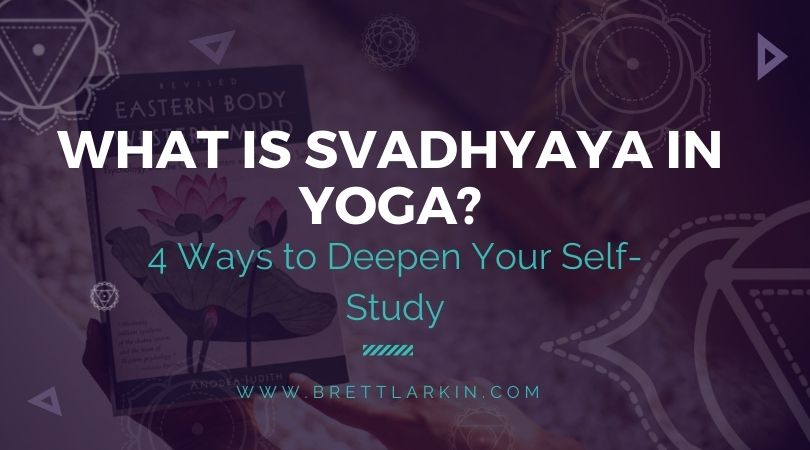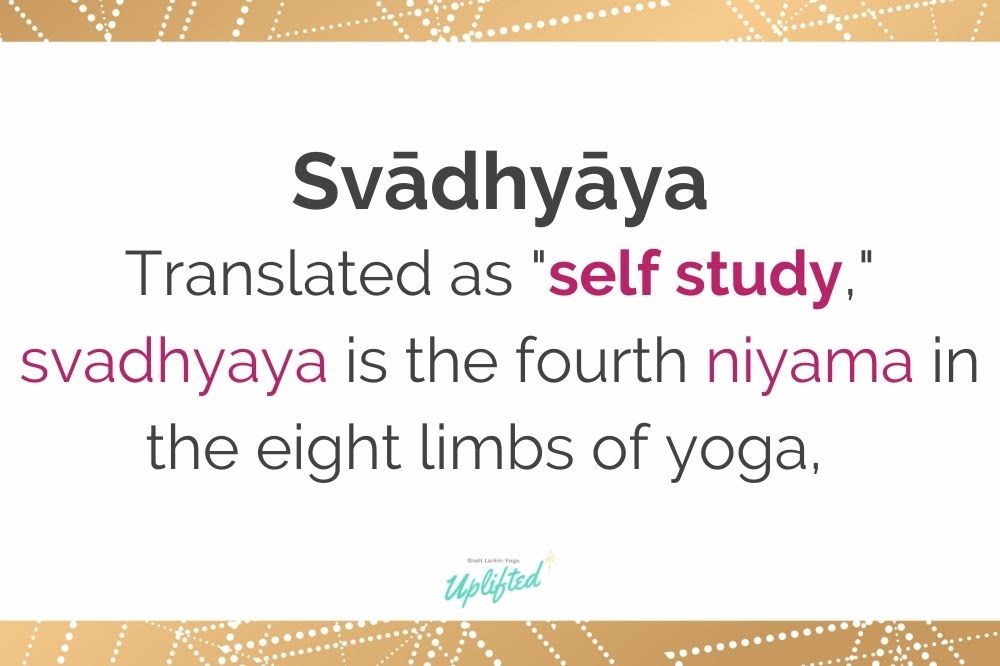Applying certain teachings from yoga, such as the yamas and niyamas, can help you move through life with far more ease and far less self judgement. Practicing yoga requires constant self study (svadhyaya) to deepen your understanding of self, erase limiting thought processes, and improve happiness in our lives.
Here’s how to understand and incorporate self study in your yogic journey.
What is Svadhyaya in Yoga?
The word svadhyaya translates to “self study,” and it’s the fourth niyama listed in the Eight Limbs of Yoga.
However, to fully understand how to apply this practice of awareness and self examination into your daily life, it’s important to delve a little deeper into how yogis practiced it in the past and some of the yoga philosophy.
Traditionally, svadhyaya meant studying the ancient philosophical yoga texts on your own (hence, self study). Reading the texts, reciting them, committing them to memory — that kind of thing.
Two of the main texts people tend to study in this interpretation of svadhyaya are the Bhagavad Gita and the Yoga Sutras.
The Bhagavad Gita (or The Gita) is one of six books of poems in the Mahabharata and is considered one of the oldest known yoga texts. The Gita’s sacred texts brought together three lifestyle aspects that would later aid the transformation of what we now know as yoga: bhakti (devotion), jnana (knowledge), and karma (action).
The Yoga Sutra is one of the most widely read texts about yoga philosophy. Patanjali wrote it during the Classical Period to help deepen a yogi’s spiritual practice and follow the path to enlightenment. This includes the Eight Limbs of Yoga (where the niyamas and svadhyaya come from).
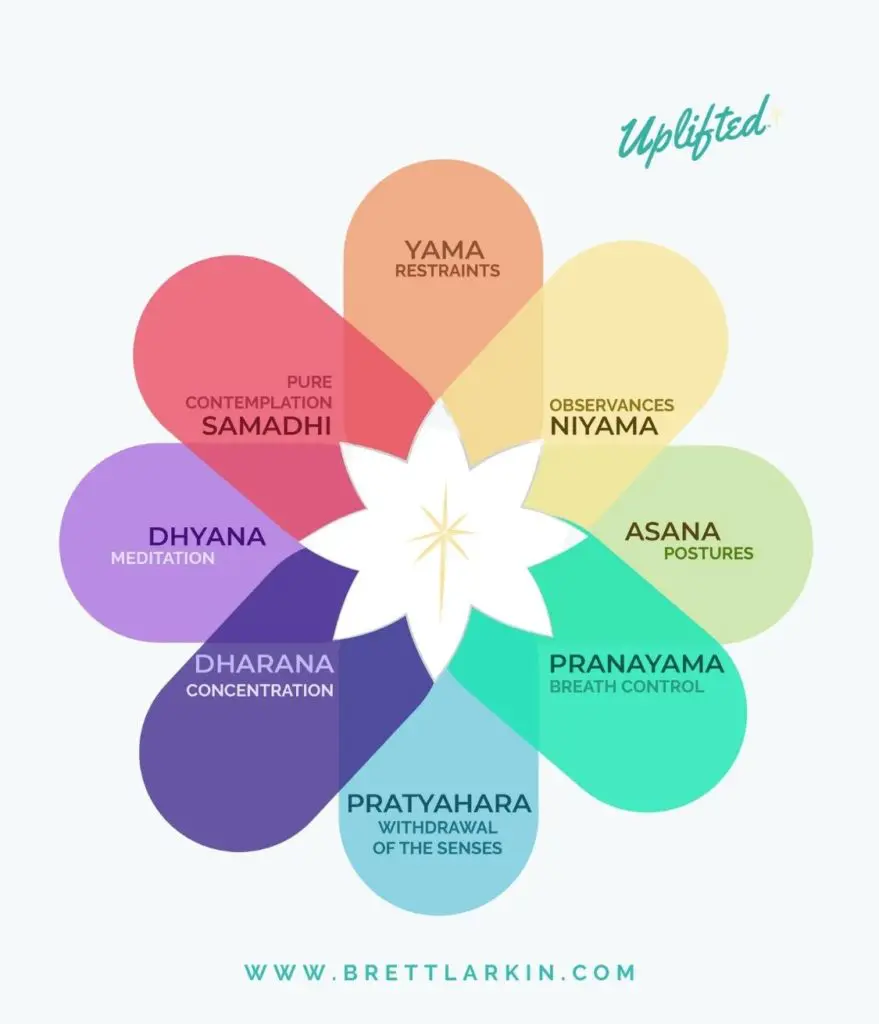
Since the creation and cultivation of the Bhagavad Gita and Patanjali’s yoga sutras, the practice of yoga and it’s sacred study has taken on many different shapes all over the world. Which also means the way we understand and apply these passed-down practices (including svadhyaya) has also changed and can take on many different forms.
Which brings us to how many present day yoga practitioners interpret svadhyaya: to apply yogic philosophy to daily life and inspect ourselves through this lens. With svadhyaya these days, I like to interpret it as a practice of self reflection, meditation, and learning new ways to improve ourselves and our world.
As society continues to evolve, introducing new ways for humans to connect with each other and technology, the practice of svadhyaya has become a high priority for those seeking reprieve from a world filled with so many distractions.

How to Practice Svadhyaya Today
Now that you know a little more about the history of the term svadhyaya, let’s talk about four practical ways you can apply this self study in the modern world.
Practice Yoga
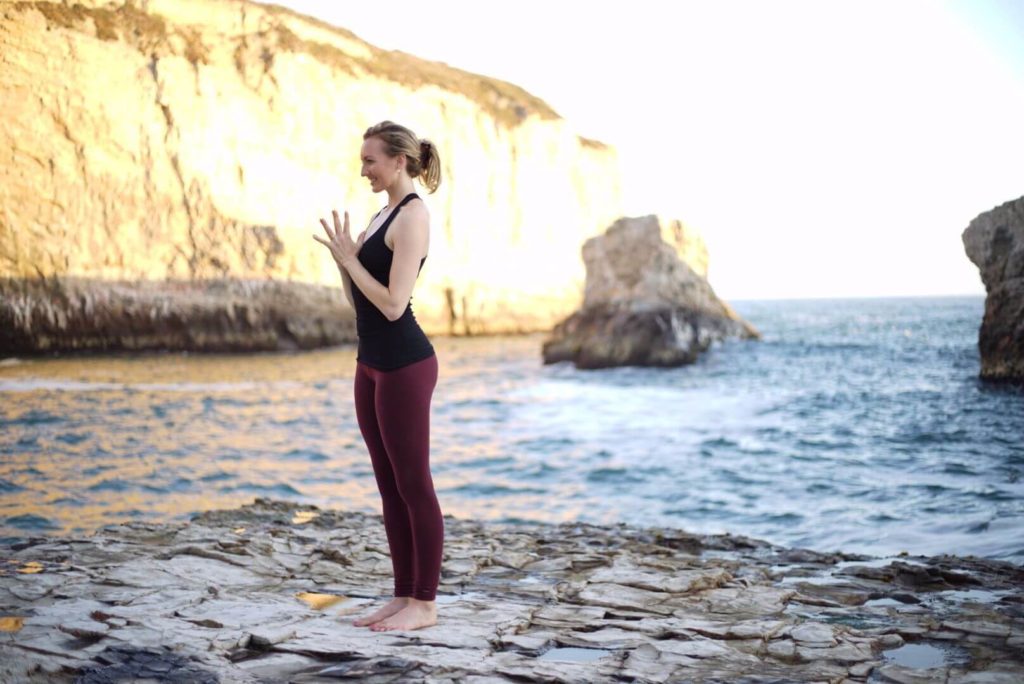
Practicing yoga requires being present in many senses. For one you have to pay attention as the instructor moves you from one pose (asana) to the next.
So how can you incorporate the practice of svadhyaya while taking classes, virtually or in-person? Well, you’re probably doing it without even knowing!
Sure, you’re listening to your yoga teacher most of the time during class, but what happens when they instruct you to move into a pose that feels really uncomfortable or asks you to stay in an asana longer than you can stand? Chances are your internal dialogue kicks into high gear: begging, sometimes demanding, that you provide your body with some relief.
If that’s the case for you, then that inner dialogue is what you should be paying attention to if you want to practice svadhyaya!
Svadhyaya on the yoga mat means studying the “what”, “how” and “why” to your thoughts and feelings while flowing from pose to pose and then comparing that to your daily life. Consider asking yourself some of these questions:
- Why are some poses (life situations) easier for me to do (deal with) than others?
- What could I be doing, perhaps unconsciously, while in these poses (life situations) that could be contributing to the uncomfortable tension (stress)?
- How do I help ease my tension (stress) while I’m in certain poses (situations)?
Not only can doing this form of self observation improve your asana practice during a yoga class, but gaining this self knowledge can change the way your mind deals with self judgment and expand your capacity for introspection both on and off the mat.
Meditate
Meditation (dhyana), which is also listed in the Eight Limbs of Yoga, is another practice that has become synonymous with yoga.
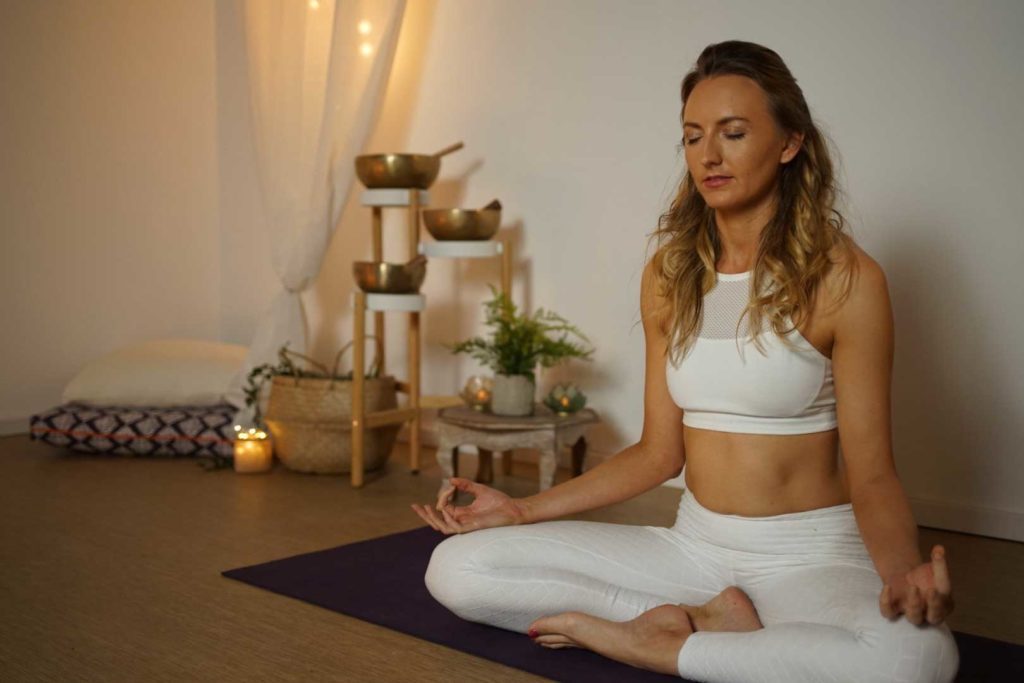
AND it’s probably one of the best ways to deepen your self study and self-awareness. All that sitting quietly, experiencing the moment, and recognizing what comes into your head? OH yeah. Dig into that healthy serving of introspection.
There’s a great deal of emphasis on the breath to help slow down your thoughts and block out external distractions.
You can also try incorporating a mudra to enhance your practice. A mudra is a hand gesture to stimulate the flow of energy in the body. The dhyana mudra, or the mudra for meditation and concentration is a great addition to a mediation practice.
You can also use mantras to help deepen your meditation and svadhyaya practice. A mantra is a syllable, word, or phrase that is usually repeated during meditation. “Om” is a very popular single-word mantra. The purpose of coupling meditation and a mantra is to help lessen the distractions that often occur when trying to get into a state of extreme focus.
While all of this sounds easy enough, it’s a mind process that truly takes time to master — so don’t feel bad if it’s hard at first! However, it’s totally worth it (in my humble opinion LOL).
Adding this form of self study to your daily svadhyaya yoga practice could help you deal with everyday stresses and distractions with far more ease and grace. You can practice in the privacy of your own home, attend meditation classes or find a yoga therapist to guide you to the best options.
Study Wisdom Teachings
One of the most literal ways you can practice svadhyaya is to simply study the origins and teachings of yoga. The writings of the Bhagavad Gita, the Hatha Yoga Pradipika, Patanjali’s Yoga Sutras, and the Upanishads are always great sources for ancient wisdom.
Even studying Lao Tzu, a Chinese philosopher and founder of Taoism, can help expand your svadhyaya practice. Lao Tzu wrote the sacred scripture known as The Tao Te Ching, which provides guidance about living with more goodness and integrity.
Alternatively, you can also read any book or article that examines ways to help cultivate self reflection in order to improve your well being, deepen the practice of self, and elevate your yoga practice.
If you’re a bit of a bookworm, starting with this practice might be perfect.
Daily Self Reflection
In addition to yoga, meditation, and studying teachings, taking time to process your thoughts and behaviors is a valuable way to strengthen your svadhyaya practice. You can release your attachment to ego and look at who you really are (do you like who you are? Do you want to change anything?).
Self reflection is something that only takes a little time, daily, to really see some results. Whether it’s right after you wake up, during a shower or simply walking in nature, spend at least 10 minutes a day to clear your mind and reflect on how you can apply the lessons you’ve learned while on the mat, deep in lotus pose or through reading text.
Next Steps
- If you’re interested in practical kriya yoga as a way to improve your daily life and relationships, check out my Yoga for Self Mastery course.
- Order my Yoga Life book for a practical guide to creating balance in your life through yoga.
- Check out my YouTube channel and find some yoga classes that you can try out for yourself!
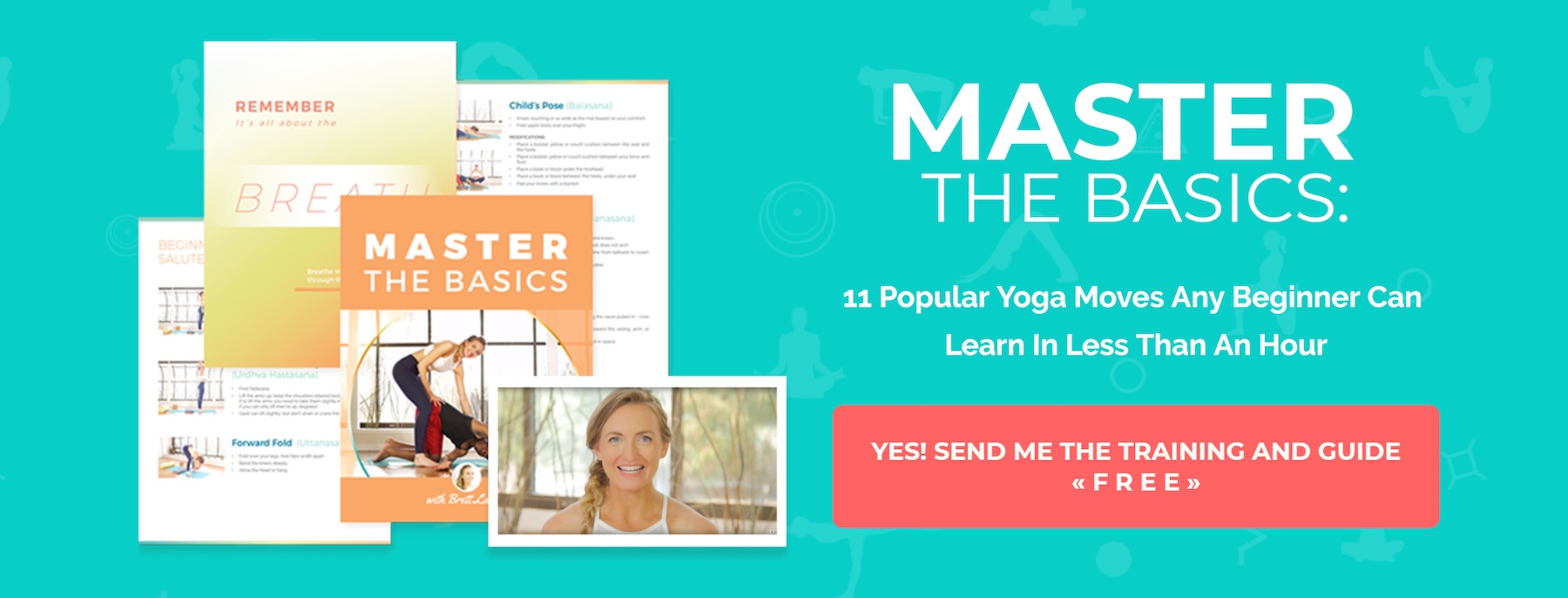
Learn how to do 11 of the most popular yoga poses correctly. Free video + PDF download.

YOU MIGHT ALSO LIKE
- How to Do Sitali Pranayama: The Cooling Breath
- Saucha: 6 Ways Purify Your Body, Mind, Relationships & Space
- Aparigraha: 6 Ways To Completely Let Go In Yoga
- Brahmacharya: Yoga’s Guide To Sensual Indulgence
- Tapas In Yoga: 4 Ways This Niyama Will Light Up Your Life
- How To Practice Satya: Ask Yourself These 3 Simple Questions
- The Meaning of Anjali Mudra: Yoga’s Sacred Greeting
- What is Asteya? 5 Powerful Ways to Practice Non-Stealing in Yoga and Life
- Understand the Koshas and Discover 5 Deeper Dimensions of You
- 4 Modern Ways to Deepen Your Svadhyaya (Self Study) Practice
- Why Ahimsa (Non-Violence) Improves All Areas of Your Life
- What Is Santosha? Yoga’s Philosophy of Happiness.
- Ishvara Pranidhana: How to Surrender to the Universe
- What is Samadhi? The 8th Limb of Yoga Explained
- What Is Dhyana In Yoga? The 7th Limb Explained
- What is Dharana? The 6th Limb of Yoga Explained
- How To Safely Practice Pratyahara In The Modern World
- The 5 Niyamas of Yoga: The Second Path of Yoga’s Eight Limbs
- The 5 Yamas of Yoga: The First Path of Yoga’s Eight Limbs
- What Is Asana? One Of The Most Popular Yogi Terms Explained
- 10 Essential Types of Pranayama Breathing Techniques That You MUST Know
- The 8 Limbs of Yoga Study Guide [Explained For Modern Life]
Learn how to do 11 of the most popular yoga poses correctly. Free video + PDF download.


